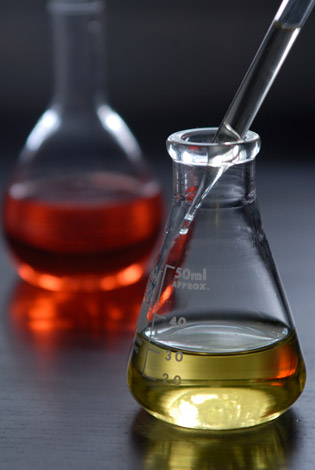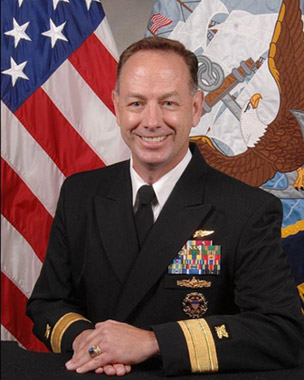Defense Logistics Agency: Warfighter Alternative Fuels & Renewable Energy
Energy is essential to our warfighter’s mission success. Without it, planes don’t fly, tanks don’t roll, satellites don’t launch and ships don’t sail. The Defense Logistics Agency (DLA) Energy has been satisfying the warfighter’s energy needs for more than 60 years. Today, the growth of our military services’ energy needs is redefining many aspects of energy support. As the energy environment changes, DLA Energy evolves as a proactive player in the development of alternative fuels and renewable energy solutions.
DLA Energy is devoted to the pursuit of energy sources that go beyond our traditional petroleum-based support, reducing energy use, reducing our dependency on foreign oil and employing more environmentally friendly fuels to meet the Department of Defense’s (DoD) immediate and future fuel needs. Several components of DLA Energy’s workforce engage the alternative fuels and renewable energy industries in all levels of development, from research and development to testing and evaluation, and implementation.
The military services established aggressive goals for the use of alternative fuel, and these goals have been the focus of DLA Energy’s attention for several years now. Our immediate objective is to support the military services’ testing and certification efforts, working towards approved specifications for drop-in replacement alternative fuels. This represents a true partnering with the services to create viable alternative fuel solutions.
From 2007 to 2009, we delivered 730,000 U.S. gallons of Fischer-Tropsch (FT) derived coal-to-liquid or gas-to-liquid fuel for Air Force test programs through four contracts. The Air Force is close to having all of its platforms certified to use blended FT fuel. And, since 2009, DLA Energy has supported seven contracts for hydrotreated renewable fuels. These incorporate a range of feedstocks from camelina to tallow and algae. So far, we have procured 761,500 U.S. gallons of the renewable fuel for research and development and test goals for the services.
These fuels being tested by all of the military services for use in their existing ships, vehicles and aircraft have real-world applications. However, the intricacies of developing a biofuel from an appropriate feedstock, manufacturing and blending the fuel, transporting and storing it, and ensuring that the fuel behaves the same way a traditional fuel would inside an engine are all areas of concern for the services. Because of these challenges, extensive research and testing takes place to ensure that the effects on engine performance, safety and maintenance are comparable to traditional fuel.

© iStockphoto.com/rmirro
The hydrotreated fuels have shown real promise. In March 2010, an Air Force A-10 Thunderbolt II aircraft successfully completed the first test flight of a military aircraft with a biofuel jet fuel blend made from 50 percent jet fuel and 50 percent camelina biofuel. The supersonic flight test of a Navy F/A-18F Super Hornet that April further proved the potential for these fuels. Subsequently, the Air Force flight tested th
e F-15 Eagle and C-17 Globemaster III. More recently, the Air Force successfully flew its F-22 Raptor at supercruise speeds in March 2011 employing the 50/50 camelina blend, and the Air Force Thunderbirds used the fuel during the May 2011 air show at Andrews Air Force Base. The Navy also successfully demonstrated a blended algae-derived fuel in its MH-60S Seahawk helicopter in May 2011, complementing their earlier tests in a riverine command boat. These continuing tests highlight the broadening application of alternative fuel blends in our nation’s military ships and aircraft.
DLA Energy is sensitive to the fact that although we represent a potentially large demand signal, the DoD represents only approximately 10 percent of the total jet fuel market. With that in mind, we sought partnering opportunities to leverage our efforts. In March 2010, we signed a strategic alliance with the Air Transport Association of America, extending our alternative fuel focus beyond the military realm to ensure a coordinated development of the supply chain. We are currently collaborating with the Department on the potential next steps to bridge the gap from research and development to operational fielding. A significant effort is just underway led by the Department of the Navy, the U.S. Department of Agriculture and the Department of Energy to use Title III authorities to partially fund biorefineries. DLA Ener
gy is participating as a member of the Integrated Project Team, and this effort shows real potential to spur the necessary industrial base development to bring required alternative fuel quantities to market.
We are also leveraging our research and development program to advance the state-of-knowledge on alternative fuels. Our projects include a variety of AFRE-related (Alternative Fuels and Renewable Energy) initiatives, such as analyzing carbon capture and sequestration, and the development of an electronic power control and conditioning gamma system – a mobile 500-kilowatt containerized system that can integrate conventional and renewable sources of electric power and convert direct current to alternating current, facilitating load management.
Renewable energy also plays a role in our contracting support for green energy with several projects involving solar or geothermal resources. DLA Energy assists bases, installations, laboratories and other federal and military locations seeking on-site renewable energy generation. We provide contracting expertise for a variety of renewable energy efforts of varying scopes, scales and lengths.
DLA Energy helps installations meet their federally-mandated renewable energy goals through acquisition support for these on-site renewable energy projects and/or through the purchase of renewable energy credits. DLA Energy has awarded contracts for more than 5.5 million megawatt hours of renewable electricity generated from wind, biomass, landfill gas, municipal solid waste and hydroelectric resources in the form of renewable energy credits since 2003. This accomplishment, valued at $7.2 million, represents proof that for each credit awarded, one megawatt-hour of electricity was generated by a renewable energy source. The program helps federal organizations that don’t have access to or capability for on-site renewable energy generation meet the mandated requirements that their electricity consumption include a certain percentage of renewable power.
It is important to note DLA Energy is not alone in the pursuit of AFRE market development. DLA Energy is currently the chair for an interagency working group focused on alternative fuels, allowing federal agencies open communication in an ever-growing field. Developments, tools or resources of one agency can assist the projects of others in the group without duplication of efforts. Learning from each others’ processes aids us in finding the most efficient and effective paths to harnessing alternative fuels for government and military use while setting the stage for industry to flourish down the road.
Collaboration among like-minded agencies is essential to the successful development and implementation of AFRE throughout the federal government. Knowledge shared is knowledge gained, and, for DLA Energy, the benefits gained have been invaluable.
It is in working together that we are strongest in achieving our goals. For DLA Energy, that strength comes from a dedicated and skilled workforce, interagency collaborations and liaison between industry and the military services in this ever-evolving area. While the precedents for AFRE are not yet as firmly established as the traditional petroleum-based support we provide, I look forward to expanding our mission to bring more areas of green energy to our customers.

U.S. Navy photo




























